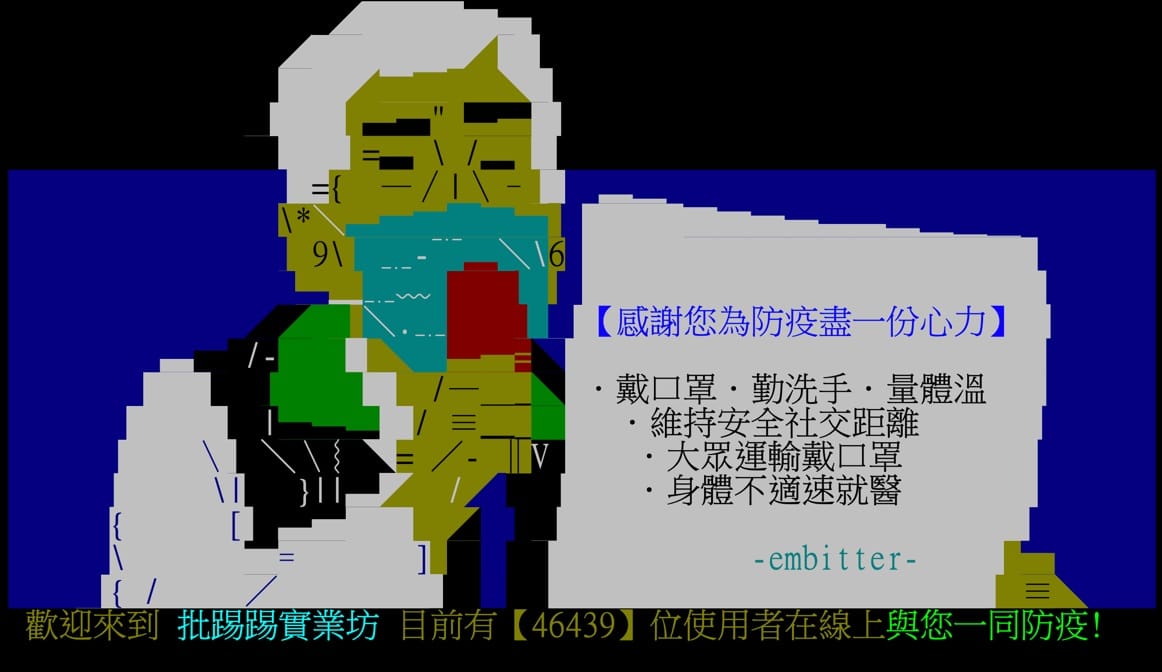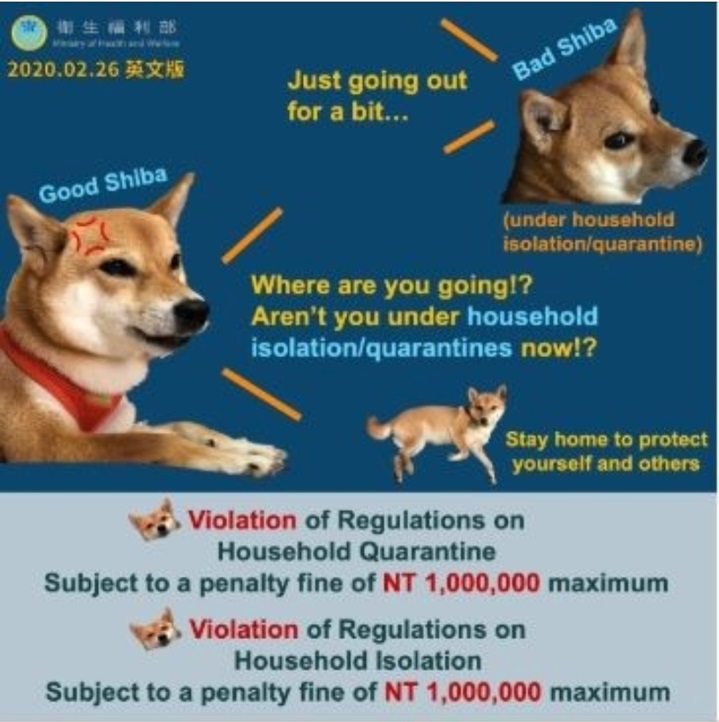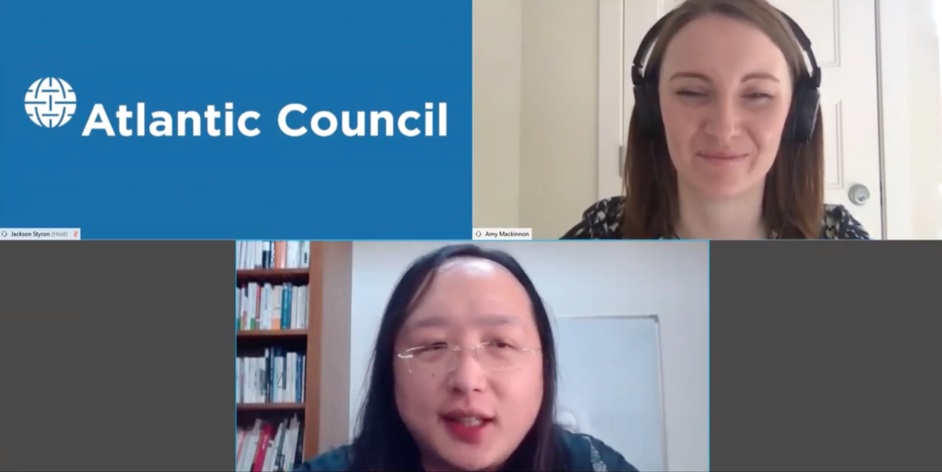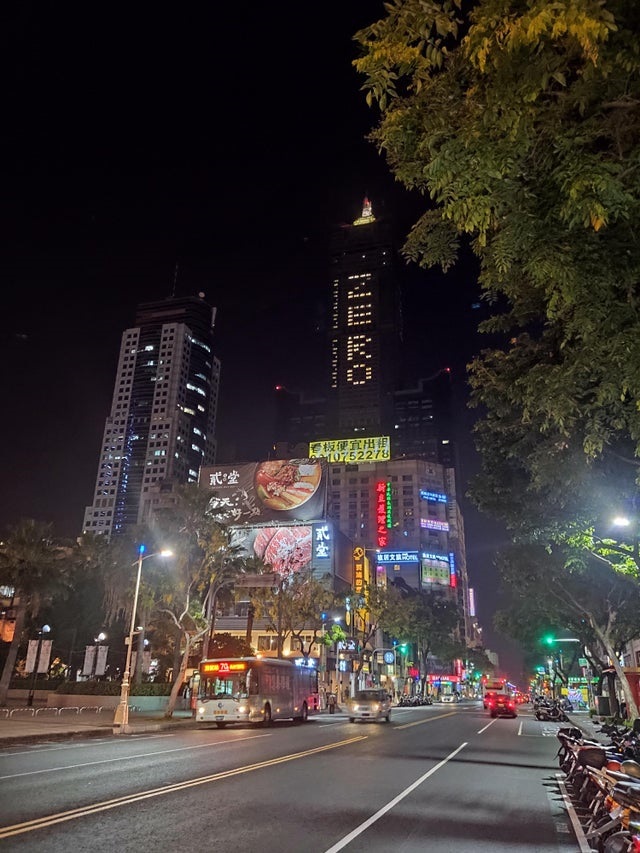The Right Response to Pandemic: How Taiwan Has Gone Five Days with Zero Coronavirus Cases
April 30, 2020 – On the last day of 2019, “No More Pipe,” a user on PPT Boards, Taiwan’s version of Reddit, reposted a message by a Dr. Li Wenliang that warned about a respiratory disease spreading in Wuhan, China. At around the same time, Luo Yi-jun, was unable to sleep. The deputy director for […]
David Jelke

April 30, 2020 – On the last day of 2019, “No More Pipe,” a user on PPT Boards, Taiwan’s version of Reddit, reposted a message by a Dr. Li Wenliang that warned about a respiratory disease spreading in Wuhan, China.
At around the same time, Luo Yi-jun, was unable to sleep. The deputy director for Taiwan’s Centers for Disease Control got out of bed and logged into PPT boards to surf trending posts.
He launched Taiwan’s first health inspections the following day, the start of a new decade and the beginning of a new normal.
Dr. Li has now died from the mysterious “respiratory disease” amidst the now-scorned approach that the Chinese government took to the novel coronavirus.
But partly because of Dr. Li, Taiwan has been hailed as one of a handful of success stories for how it has effectively halted the spread of coronavirus within its borders, with the country now celebrating its fifth day of zero confirmed cases.
The keys to Taiwan’s response have been rather inconspicuous to everyone except its citizens. That is, until H.E. Audrey Tang, Taiwan’s Digital Minister, detailed the different aspects that gave rise to its success in a webinar hosted Wednesday by the Atlantic Council.
Unlike neighboring China, Taiwan took an approach of ‘humor over rumor’
Even beyond taking early action (perhaps the earliest public action of any nation), there’s a lot that went right in Taiwan’s response to the pandemic.
Taiwan has been here before. The 2003 outbreak of SARS ravaged the island nation, infecting 668 people and claiming the lives of 181. In addition to being the Asian country in which SARS spread the fastest, Taiwan also endured the humiliation of having a strategy of “barricading an entire hospital” backfire.
Many needlessly died, and some argued that the government violated constitutional rights in the process. Since then, Taiwan has upped its disease detection capabilities and been on high alert.

Taiwan has opted for the soft power approach
Taiwan has also used creative means in countering misinformation about the virus. In February, Taiwan’s health ministry introduced citizens to its cartoon “spokesdog,” a Shiba Inu named Zongchai who helped counter coronavirus rumors and promote safe habits.
The Zongchai strategy “went absolutely viral” according to Tang, dwarfing the original rumors about a toilet paper shortage (the government successfully traced back the conception of the rumor to a toilet paper reseller).
This “humor over rumor” strategy contrasts sharply with Taiwan’s rival across the Formosa Strait. There, the Chinese government has relied on Maoist-era messaging and populist propaganda that taps into a sense of national duty. Slogans from different parts of the country vary include “to visit each other is to kill each other,” and “to get together is to commit suicide.”
But Taiwan has also taken a few hardline measures
The Taiwanese government has also embraced a form of communication that aims to build trust with the public. Since January 20, 2020, President Tsai Ing-wen has hosted an “ask-me-anything” style press conference that does not adjourn until all press questions have been addressed and answered.
“We emphasize opening our mind to new and novel ideas,” Tang said, saying that government officials and the public have worked as a “collective intelligence system,” where transparency and the exchange of ideas are key.
The government’s embrace of creative solutions doesn’t end there. Tang related how when a young boy complained at one of these conferences of being teased for wearing a pink mask to school, government officials posted pictures of themselves wearing pink masks to work on social media to prevent a snowball effect of mask abstentions.
Of course, Taiwan also achieved success by taking some hardline measures.
Taiwan’s version of the Centers for Disease Control early on decided that “everywhere else on earth is on high risk” and banned all incoming flights in the early stages of response, according to Tang.
Later, all incoming travelers to Taiwan had to be assessed and ranked according to threat level.
All high-risk incomers were sent to centralized quarantines run by the government. Low-risk incomers were sentenced to self-quarantine in their houses, where a “digital fence” was created to notify authorities and neighbors whether that person had left a designated quarantine area.
Communitarian culture played a strong role in holding individual’s accountable, as the population demanded to play the role of “co-detective” and report neighbors suspected of breaking quarantine protocol. Tang called community enforcement in general “really effective” in helping contain the disease.

Digital Minister Audrey Tang
Face masks, geography and projections that Taiwan would be ‘second worst-hit’
Taiwanese citizens early on were limited to buying two face masks a week to ensure that the nation would not run out, which was tracked and enforced by a national health insurance that covers “99.9 percent” of the people, according to Tang.
In addition, open source maps partly run by civil hackers, or “civil engineers” as Tang called them, collaborate to publish the supply level of masks at every pharmacy in the country every three minutes.
Tang admitted that geography played a huge role in Taiwan’s successful response. There’s no way for a wanderer “to accidentally stumble on Taiwan,” Tang admitted, referencing Taiwan’s island geography.
However, she did not let that detract from Taiwan’s efforts. For effect, she said: “81. That’s how many miles Taiwan is from mainland China,” the ground zero and long-time epicenter of the COVID-19 disease caused by the novel coronavirus.
In fact, Tang referenced an early Johns Hopkins study predicting that Taiwan would become the second worst-hit country in terms of coronavirus cases, behind China.
That was wrong.
No contact tracing app – but an app to donate masks to the rest of the world
Even though Taiwan never launched any contact tracing apps, it has used a different app to mitigate the spread of COVID-19— for other countries.
A new government-sponsored app allows citizens of Taiwan with extra masks to donate them to other nations. Including other governmental efforts, Taiwan has donated “tens of millions” of masks.
“Currently Taiwan feels calm” due to how well it has responded, Tang said. Now it is “in a stage where people are feeling generous.”

Photo of Kaoshiung’s 85 Building celebrating “ZERO” cases for three straight days









Member discussion